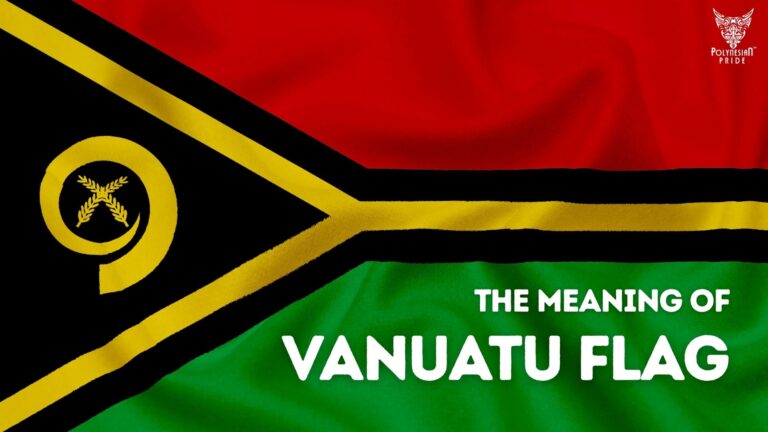Solomon Islands Flag: A Colorful Symbol of Ocean, Land, and Unity
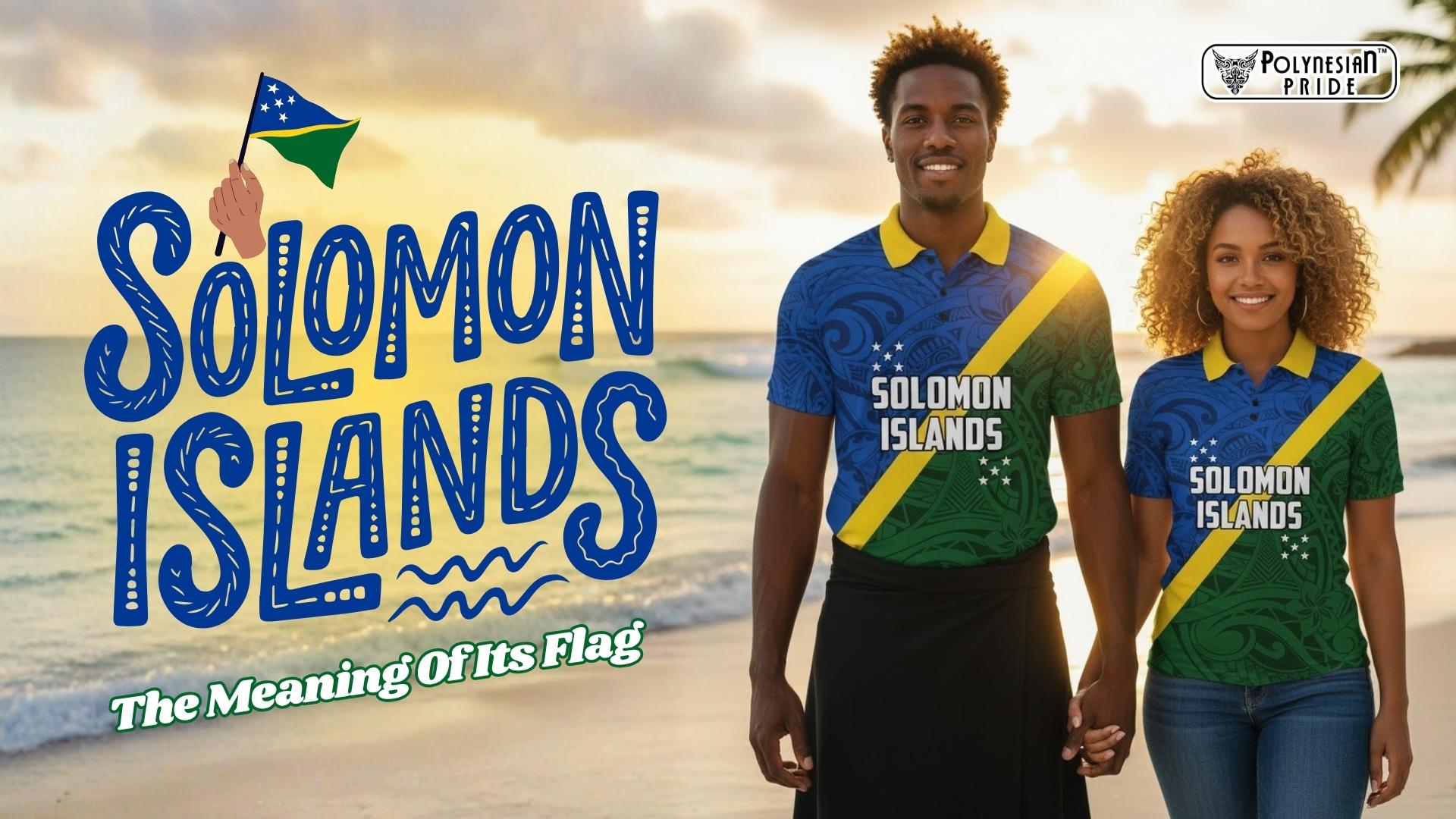
Tucked away in the South Pacific, the Solomon Islands is a nation of over 900 islands known for its turquoise lagoons, rainforests, and friendly island life. Though small and often overlooked, this tropical paradise has a rich story to tell – and it begins with its flag.
The Solomon Islands flag, with its brilliant blue, green, and yellow design, captures the essence of the islands’ ocean, land, and sunshine. Each color and star tells a story of unity, nature, and pride at the heart of the Pacific.
Quick Facts About the Solomon Islands Flag
Before diving into the meaning of its colors and stars, let’s get to know the flag itself. The Solomon Islands flag was officially adopted on 18 November 1977, just months before the islands gained independence from Britain.
The flag features two triangles – a blue one on the top left and a green one on the bottom right, separated by a golden diagonal stripe. In the blue field, five white stars are arranged in an “X” pattern.
Each element is simple but deeply symbolic:
- Blue stands for the surrounding ocean and clear skies.
- Green represents the lush forests and fertile lands.
- Yellow symbolizes the bright Pacific sunshine and hope.
- The five stars represent the country’s five main island groups.
From national events to sporting victories, you’ll see this flag proudly waving across towns and villages, a bright reminder of unity among hundreds of islands scattered across the South Pacific.
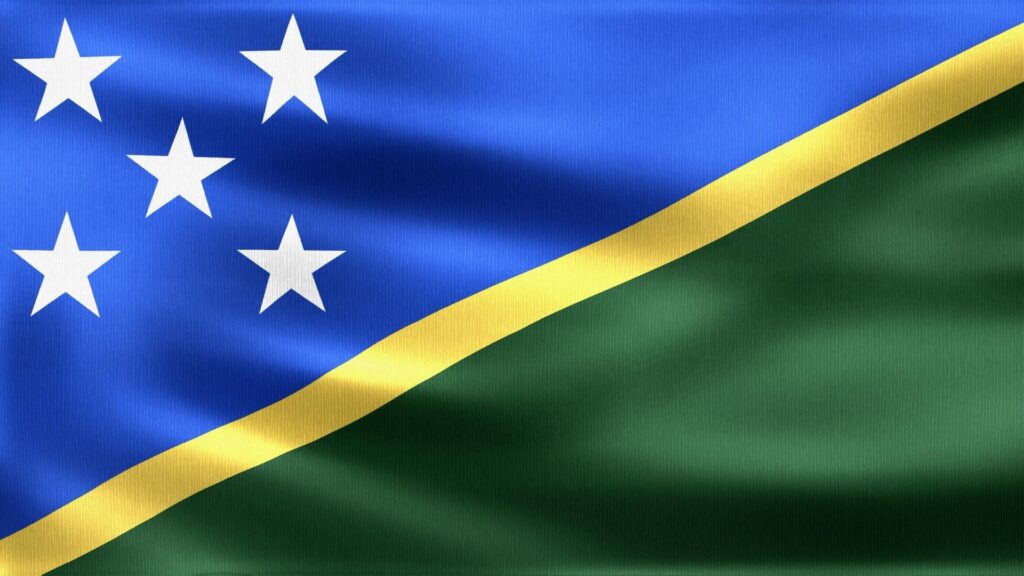
Meaning Behind the Colors and Design
Every shade and shape on the Solomon Islands flag tells a story. The design may look simple at first glance, but it beautifully captures the islands’ geography, nature, and national spirit.
The Solomon Islands flag colors — blue, green, and yellow — each carry a special meaning:
- Blue: stands for the endless ocean that surrounds the islands and the clear tropical sky above. It reminds locals and travelers alike that life in the Solomons is forever tied to the sea.
- Green: represents the land, the dense rainforests, fertile valleys, and rich farming traditions that sustain island communities.
- The golden diagonal stripe: symbolizes the sunshine that warms the islands and brings balance between land and sea, a bridge between nature and people.
Together, these colors reflect harmony, resilience, and optimism. The flag of Solomon Islands isn’t just a national emblem; it’s a visual love letter to the islands’ natural beauty and the peaceful life of its people.
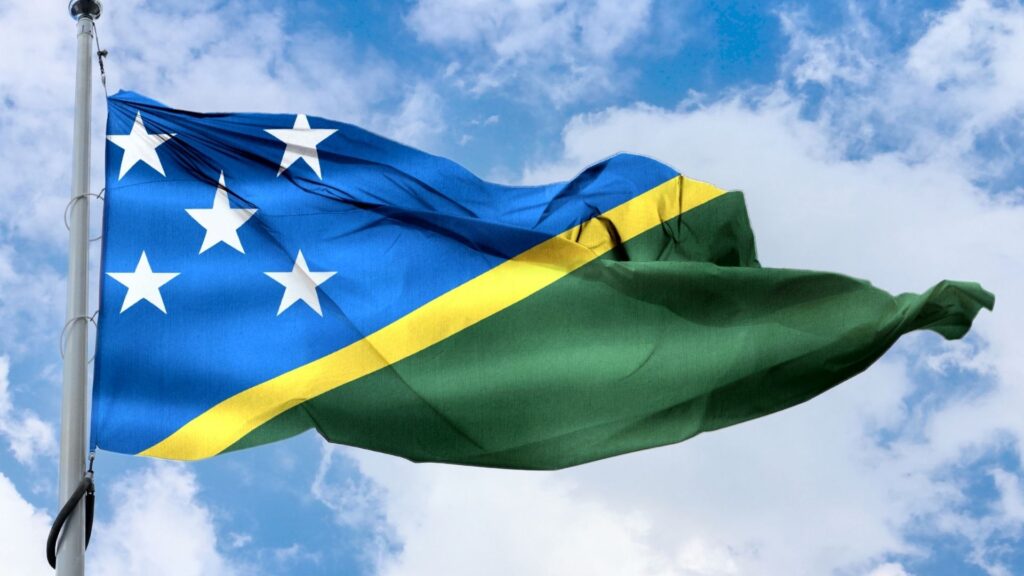
Why the Five Stars Matter
The five shining stars on the Solomon Islands flag aren’t just decorations — they tell the story of a nation made up of hundreds of islands and one shared spirit. Each star represents one of the five main island groups that make up the Solomon Islands, stretching like jewels across the South Pacific.
Western Province
Home to the famous lagoons of Gizo and the dive paradise of Munda, the Western Province is where coral reefs and WWII wrecks draw travelers from around the world. It’s also known for its laid-back lifestyle and cultural festivals that keep local traditions alive. The star for the Western group shines for adventure and resilience.
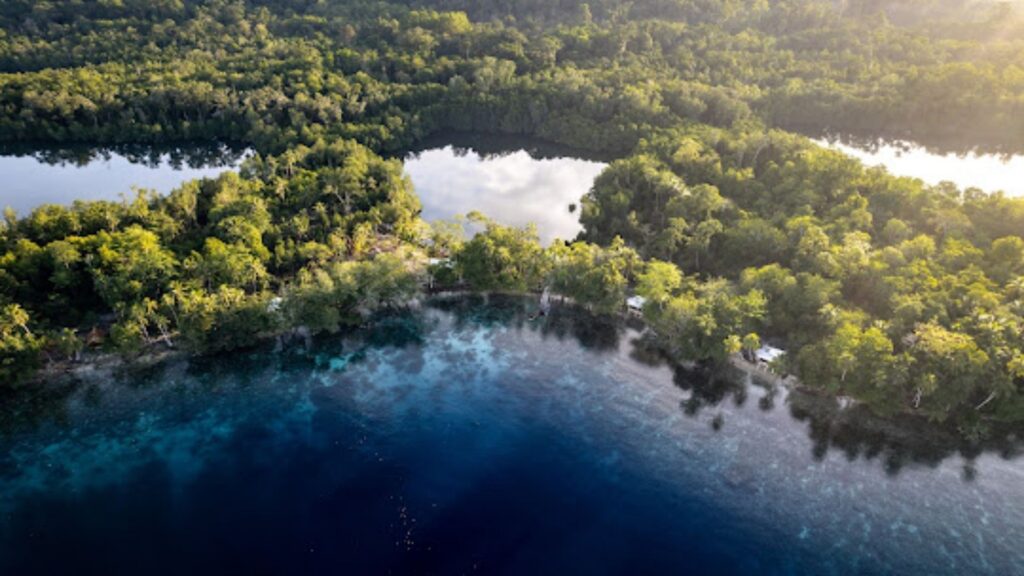
Central Province
Located close to the capital, this area is a crossroads of history and community. The Central islands are rich in fishing villages, mangroves, and sacred sites that tell ancient stories. It’s where land and sea connect most intimately — a perfect reflection of the harmony symbolized by the flag’s golden stripe.
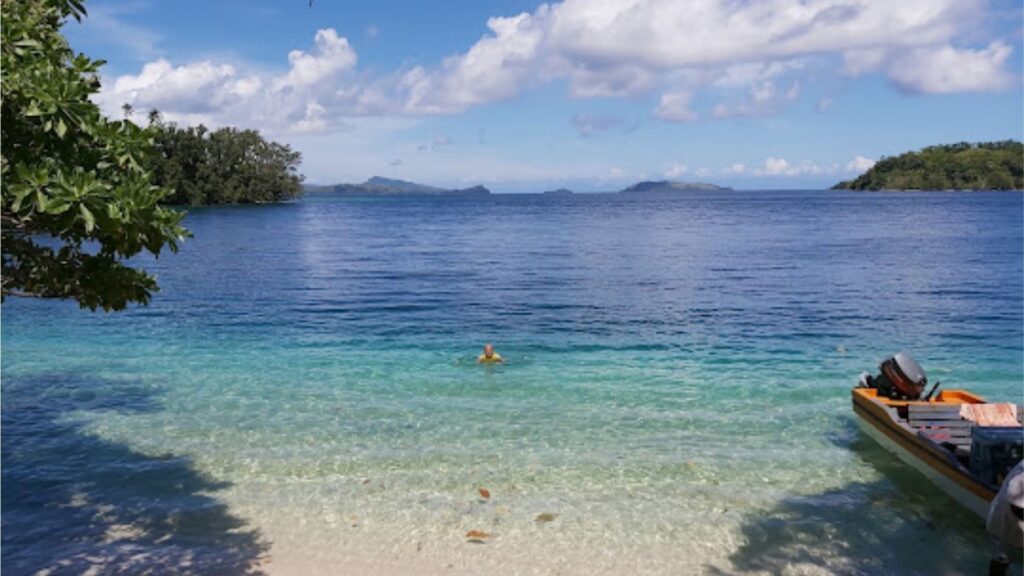
Eastern Province (Makira–Ulawa and Temotu)
These islands stretch far into the ocean, where time seems to slow down. The Eastern star represents isolation and endurance, a tribute to communities that live close to nature, surrounded by pristine rainforests and coral reefs that few outsiders have seen.
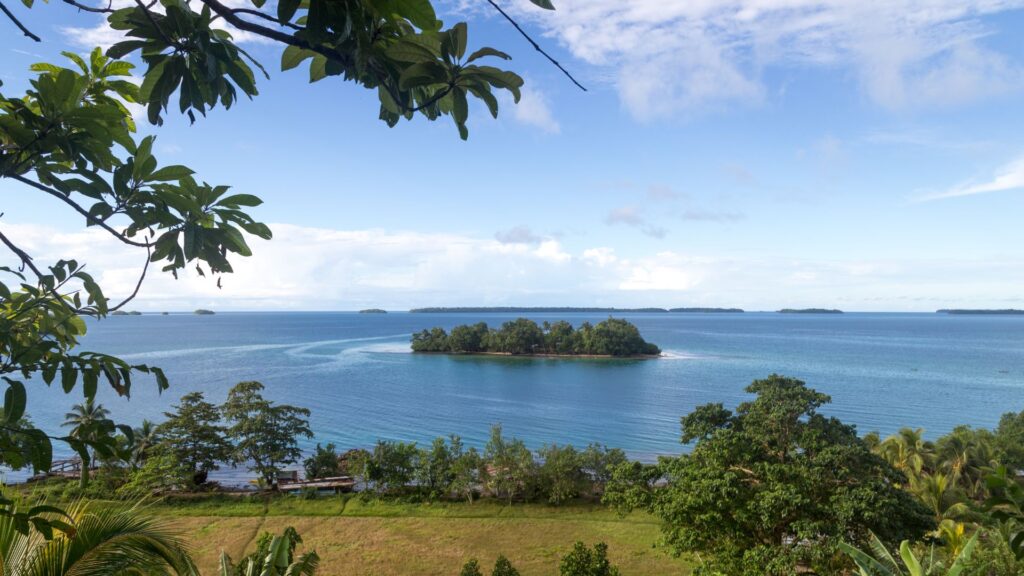
Malaita Province
Malaita is one of the most populated islands and a cultural powerhouse. Its people are known for traditional shell-money crafting, warrior dances, and strong community ties. The Malaitan star symbolizes heritage, strength, and leadership among Fiji’s Pacific neighbors.
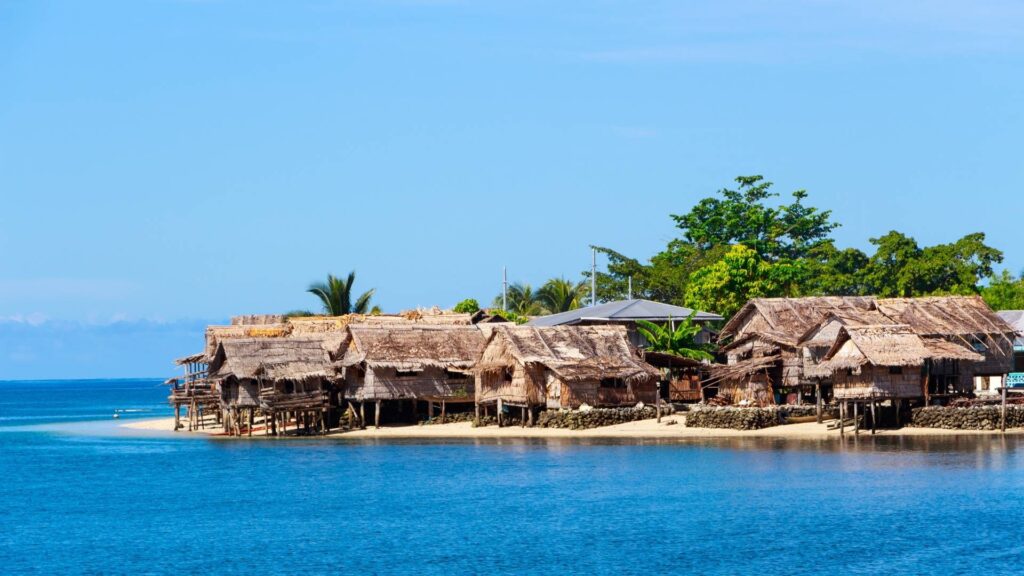
Rennell and Bellona
The southernmost islands, Rennell and Bellona, are UNESCO-listed for their stunning Lake Tegano and untouched limestone cliffs. Their star symbolizes preservation, protecting both nature and culture in a changing world.
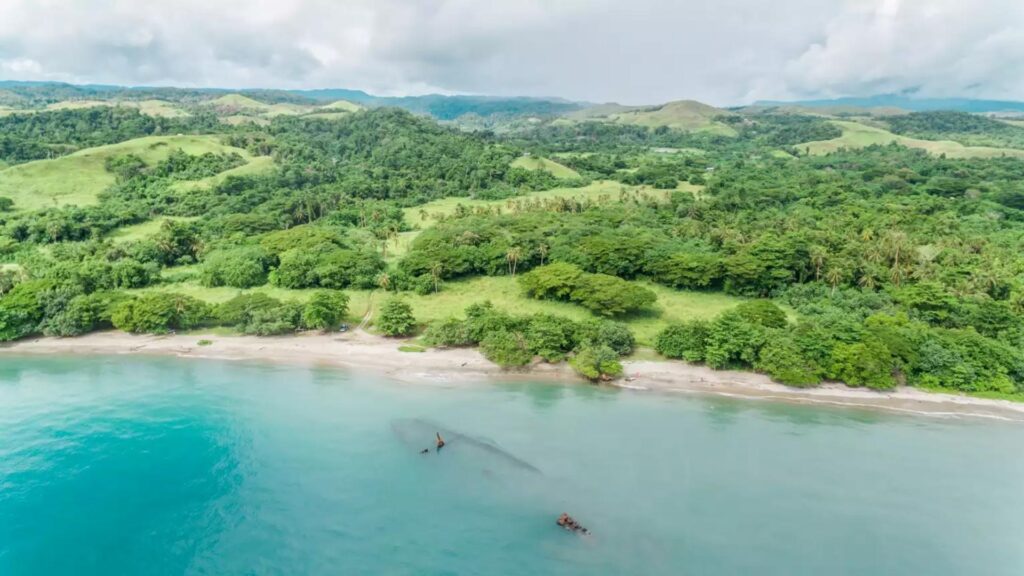
Together, the five stars shine as one constellation of unity. Though the Solomon Islands are scattered across vast blue waters, the flag reminds everyone, locals and travelers alike, that the heart of this Pacific nation beats as one.
A Brief History of the Solomon Islands Flag
From British Rule to a New Identity
Like many Pacific nations—including Fiji, Papua New Guinea, and Vanuatu – the Solomon Islands spent much of its modern history under British or colonial rule before gaining independence.
From the late 19th century until the late 1970s, the islands were known as the British Solomon Islands Protectorate, and their flag carried the familiar British Blue Ensign with a small local badge on the side.
Designing a Flag for Independence
The Solomon Islands flag history reflects this journey from colonial past to national pride. As the islands moved toward self-governance, Solomon Islanders began dreaming of a symbol that was truly their own, something that captured the essence of their ocean, land, and people. In 1975, a nationwide competition invited students, artists, and communities to design a new flag.
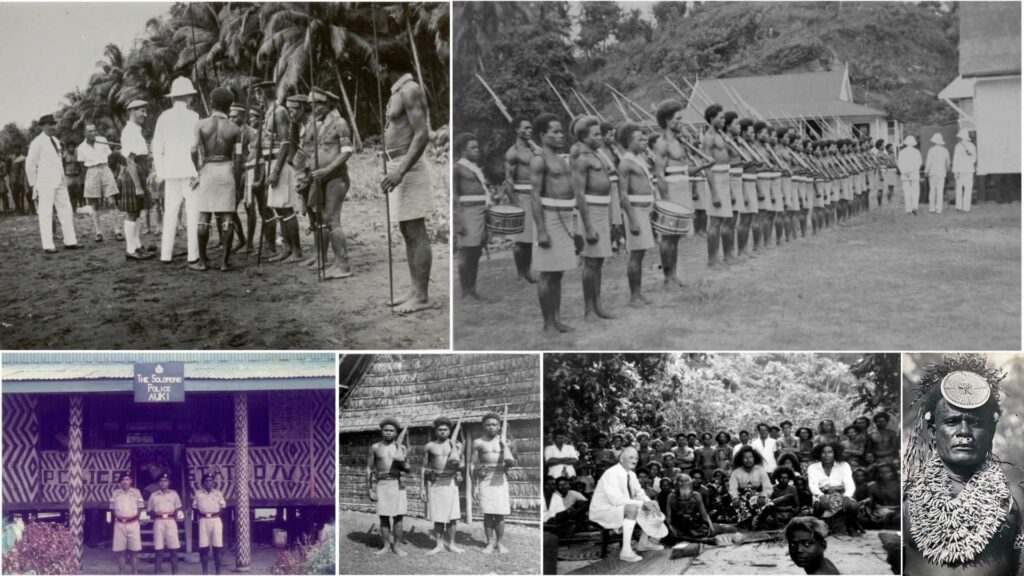
The Winning Design and Its Symbolism
The winning concept, adopted on 18 November 1977, just before complete independence in July 1978, featured a blue triangle for the sea, a green triangle for the land, and a golden diagonal stripe for sunshine and hope. The five white stars represented the five island groups united as one nation.
Raising the Flag for the First Time
At midnight on 7 July 1978, in the capital city of Honiara, the Union Jack was lowered and the new flag of the Solomon Islands was raised for the very first time. Crowds cheered, sang, and celebrated. It was more than a political moment; it was the birth of a national identity.

A Lasting Symbol of Unity and Pride
Today, the Solomon Islands flag flies proudly across schools, government offices, and sporting arenas. For many, it’s a daily reminder of how a small island nation turned its colonial past into a vibrant symbol of freedom, resilience, and unity.
The Flag as a Reflection of Solomon Islands’ Identity
The Solomon Islands flag isn’t just a national symbol; it’s a reflection of who the Solomon Islands people are: proud, peaceful, and deeply connected to nature and community. Each color and star mirrors the country’s spirit, from the ocean that sustains life to the unity that binds hundreds of islands together.
National Pride and Belonging
Across the islands, the flag is a powerful reminder of independence and identity. During national holidays, school parades, and sports tournaments, the blue-green-yellow flag waves proudly above crowds singing with joy.
For many Solomon Islanders, it represents freedom, a symbol earned through resilience and hope.
Children are taught to raise the flag each morning at school, learning early that it stands for more than government or politics; it stands for them, for their people, and for the future of their islands.

Nature and Everyday Life
The flag’s colors are not just symbolic; they are visible everywhere. The blue of the sea surrounds every village, the green of the forests shelters homes, and the golden sunshine warms daily life. Many locals even use these colors in traditional clothing and art — carrying the flag’s spirit into everyday culture.
Unity in Diversity
The Solomon Islands are home to over 70 languages and dozens of distinct cultural groups, yet the flag unites them under one design.
In ceremonies, markets, and festivals, it’s common to see people from different islands standing together under the same flag.
It reminds everyone that, no matter their dialect or origin, they share one identity and one destiny as Solomon Islanders.

Tradition Meets Modern Life
Today, the flag appears everywhere, painted on fishing boats, printed on T-shirts, and flying high above schools and sports fields. It bridges tradition and modern life, showing how a small Pacific nation celebrates its heritage while stepping confidently into the global world.
For travelers, the Solomon Islands flag is more than a marker of place; it’s an invitation to understand the heart of a nation built on unity, culture, and the rhythm of island life.
Travel Insight: Spotting the Flag Around the Islands
When you travel through the Solomon Islands, the flag becomes part of the scenery – not just a national emblem, but a symbol that waves with island life itself.
In the Capital – Honiara’s Proud Display
Start in Honiara, the bustling capital of Guadalcanal Island. You’ll spot the Solomon Islands flag fluttering atop government buildings, schools, and waterfront cafés. Every July, during Independence Day celebrations, the city turns into a sea of blue, green, and yellow children waving tiny flags while traditional dancers fill the streets with rhythm and color.
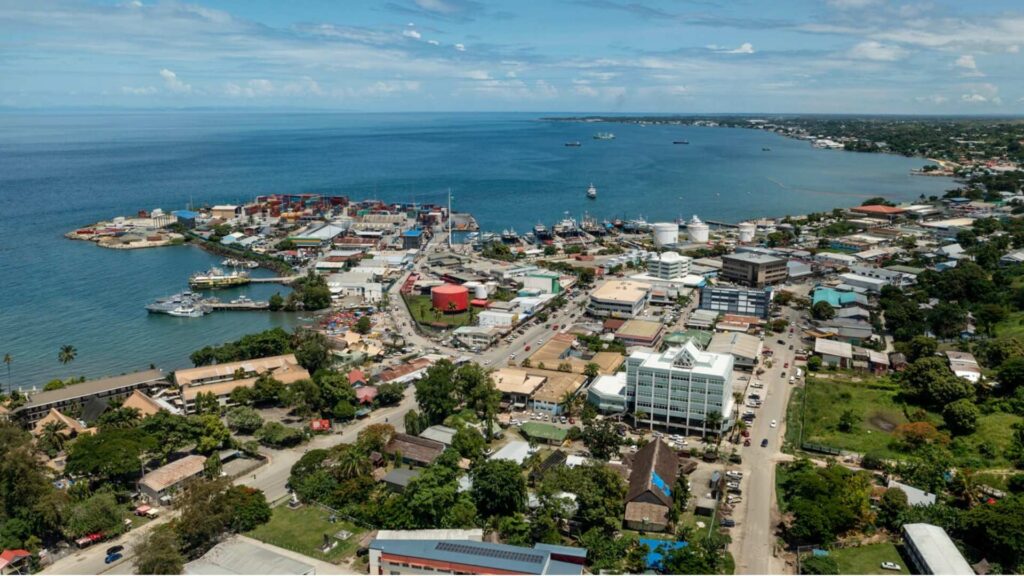
Across the Villages and Islands
Beyond the capital, the flag takes on a personal meaning. In small coastal villages, it flies on fishing boats and wooden homes, a daily symbol of pride and unity. Locals often raise the flag during community gatherings or church events, reminding everyone of the bond that connects them across the ocean.
Nature Reflecting the Flag’s Colors
Perhaps the most magical thing is how the flag’s colors echo the landscape itself. The deep blue of the Coral Sea, the lush green of the rainforests, and the golden sunlight pouring over white-sand beaches, it’s as if the islands were painted in the same palette as their flag.
Respecting the Flag as a Traveler
Visitors are encouraged to treat the flag with respect. It’s more than decoration; it represents national identity and pride. Avoid using it as a casual backdrop or beach accessory; instead, take a moment to appreciate what it means to the Solomon Islands people: harmony, freedom, and connection to their land and sea.
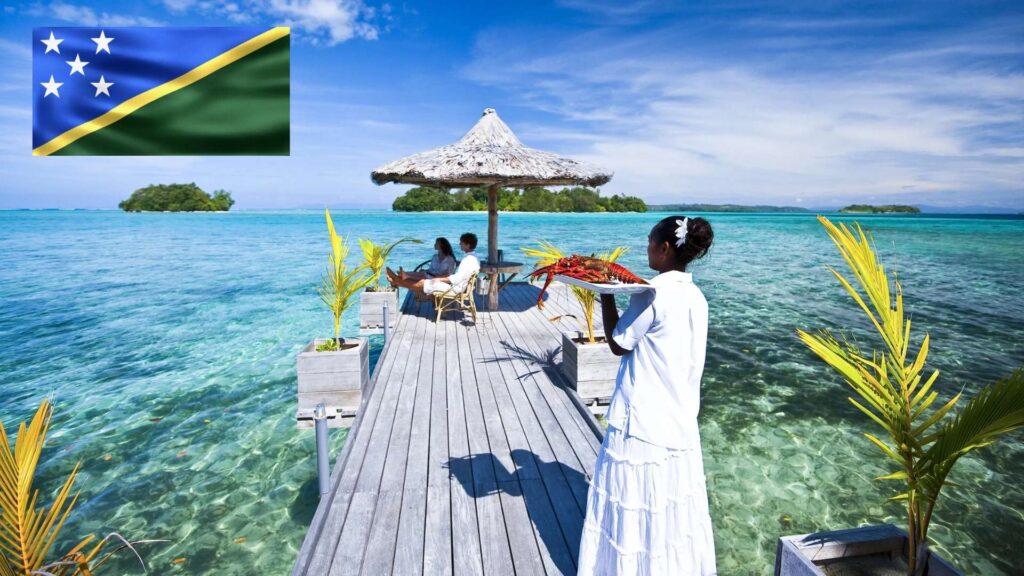
The Heart of Solomon Islands Shines in Its Flag
The Solomon Islands flag is more than a pattern of colors and stars; it’s a living symbol of who the people of the Solomon Islands are. It’s blue, green, and gold, woven together to tell the stories of the sea, the land, and the radiant Pacific sun.
Each time it flutters above villages, schools, or boats on the turquoise waters, it reminds the nation of its origins and how far it has journeyed since independence. The flag unites more than 900 islands and 70 languages under one sky – a rare harmony in today’s world.
For travelers, seeing the flag waving in the island breeze isn’t just about spotting a national emblem. It’s an invitation to slow down, breathe in the ocean air, and feel the peace and pride that flow through these islands. In its simple design lies the heartbeat of a nation – vibrant, resilient, and full of sunshine.
FAQs About the Solomon Islands Flag
What does the Solomon Islands flag meaning?
The Solomon Islands flag represents the nation’s unity, nature, and independence. Its blue, green, and yellow colors symbolize the sea, land, and sunshine, while the five stars stand for the five main island groups that make up the country.
What do the colors on the Solomon Islands flag mean?
Blue: The ocean and the clear Pacific sky.
Green: The lush forests and fertile land.
Yellow: The sunshine and hope that connect land and sea.
Together, they reflect harmony between people and nature.
Why are there five stars on the Solomon Islands flag?
The five stars represent the nation’s five main island groups: Western, Central, Eastern, Malaita, and Rennell & Bellona. They symbolize unity among diverse islands and communities across the South Pacific.
When was the Solomon Islands flag adopted?
The flag was officially adopted on 18 November 1977, just months before the Solomon Islands gained complete independence from Britain on 7 July 1978. It replaced the old British Blue Ensign flag.
How is the Solomon Islands flag connected to tourism?
The flag’s vibrant blue, green, and yellow mirror the islands’ stunning landscapes, the ocean, jungles, and sunlight. Visitors often see the Solomon Islands flag flying proudly at schools, markets, and festivals, symbolizing the nation’s beauty and welcoming spirit.

I am a cultural historian and editor with over 10 years of research into pre-contact Polynesian history, the Lapita migration, and oral traditions. Share the excitement of my latest publications.
My contact:
Email: [email protected]
Tel: +64 21 456 7890




